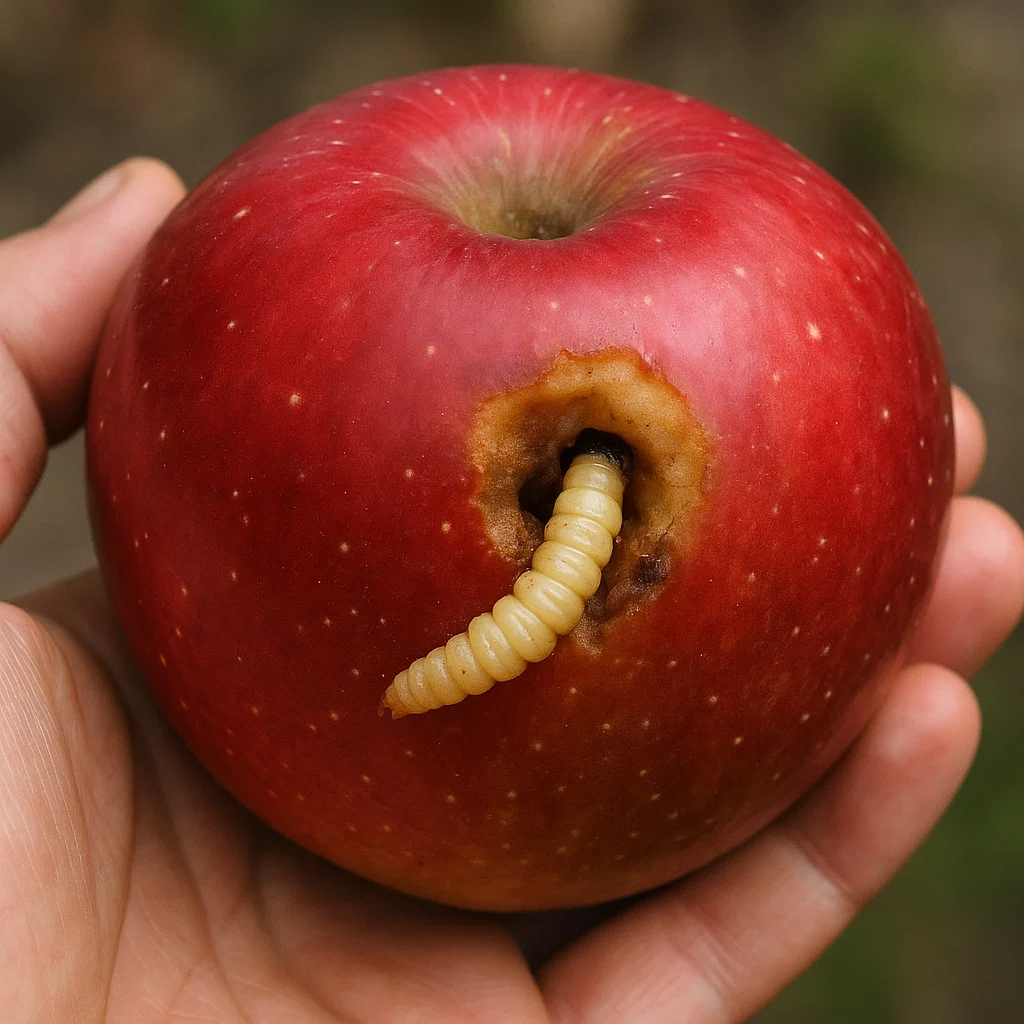Finding a worm in your fruit can be unpleasant, but it’s not uncommon—especially with organic or homegrown produce. Here’s what you should do if it happens.
1. Don’t Panic – It’s Usually Harmless
Worms found in fruit are typically insect larvae, such as those of fruit flies or moths (e.g., codling moth in apples or the Oriental fruit moth in peaches). While the sight may be unappealing, they are not harmful to human health in most cases. Accidentally ingesting a small larva is unlikely to cause illness.

2. Examine the Fruit
Once you spot a worm, cut the fruit open to assess the damage:
-
If the worm is confined to a small area, you can cut it out and eat the rest of the fruit.
-
If the fruit is extensively damaged, discolored, moldy, or has a bad smell, it’s best to discard it.

3. Remove and Dispose of the Worm
Wrap the worm and any spoiled parts in tissue or place them in a sealed bag before throwing them in the trash. This prevents any larvae from surviving or spreading.
4. Clean Up Properly
After handling infested fruit:
-
Wash your hands thoroughly with soap and warm water.
-
Clean any knives, cutting boards, or surfaces that came into contact with the worm or spoiled fruit.

5. Check Other Fruits
If the fruit came in a batch (e.g., a bag of apples or a box of peaches), examine the rest for:
-
Tiny holes or entry points
-
Brown or mushy spots
-
Signs of movement
Store the unaffected fruit in the refrigerator to slow down any potential development of hidden larvae.

6. Consider the Source of the Fruit
Store-bought fruit:
-
Contact the retailer where you purchased the fruit.
-
Many stores will offer a refund or replace the item.
-
If the issue persists, consider reporting it to local food safety authorities.
Homegrown fruit:
-
Worms are common in fruit grown without pesticides.
-
To reduce future infestations, consider organic pest control methods such as neem oil, fruit bagging, or introducing beneficial insects.
-
Regularly inspect and harvest ripe fruit to avoid over-ripening, which attracts pests.

7. Prevent Future Encounters
-
Wash all fruit thoroughly under running water before eating, even if you plan to peel it.
-
Use a saltwater soak (1 tablespoon of salt per liter of water for 5–10 minutes) to help draw out any hidden pests.
-
Store fruit in cool, dry places or refrigerate to slow down spoilage and pest activity.
-
Buy from reputable sources and choose fruits that are firm and free from visible damage.
Final Thoughts
While discovering a worm in your fruit can be off-putting, it’s not necessarily a cause for concern. In fact, it’s sometimes a sign that the fruit was grown with minimal pesticide use. With a few simple steps—inspect, clean, and dispose properly—you can handle the situation safely and continue enjoying fresh produce with peace of mind.


